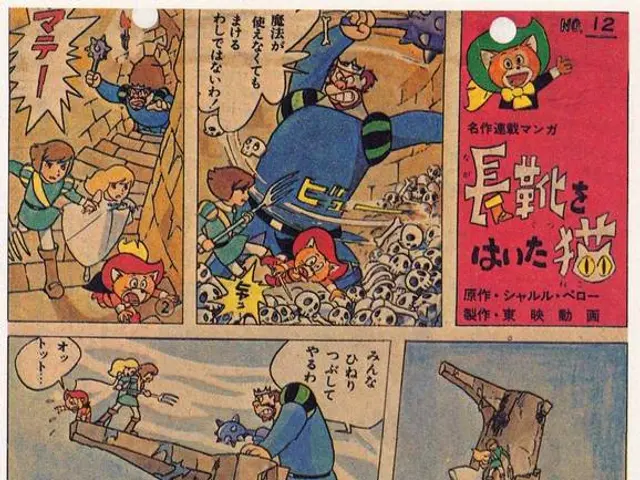Overview of Various Video Game Concept Art Types and Their Styles
Concept art plays a crucial role in the creation of engaging and immersive video games, as evident in popular titles like Overwatch and Skyrim. This artistic medium serves as the first visual representation of a game's design vision, acting as a catalyst for the development process.
In the case of Overwatch, the game's concept art showcases its vibrant and diverse character roster, each hero's unique design and backstory contributing significantly to the game's visual and narrative variety. From the mighty tank Winston to the agile Tracer, every character is meticulously designed to reflect their personality and role within the game.
Similarly, Skyrim's landscape concept art showcases the expansive world players explore, rooted in initial maps and sketches. The artwork creates a captivating environment that immerses players in the game's medieval fantasy setting.
Concept art services for game development are diverse and cover multiple aspects essential for shaping a game's visual identity. The main types of concept art services typically offered include Character Concept Art, Environment Concept Art, Vehicle and Prop Concept Art, Storyboarding, Matte Paintings, Costume and Accessory Design, Technical Art, and various specialized services tailored to specific projects.
Character Concept Art is designed to establish the appearance, personality, and style of game protagonists, antagonists, NPCs, and creatures. This process involves various iterations, including initial sketches, front/back views, and additional poses or outfits. Environment Concept Art focuses on visualizing the settings and worlds within the game, helping define the game’s mood, setting, and narrative backdrop.
Vehicle and Prop Concept Art includes the design of vehicles, weapons, tools, and other interactive or decorative objects that populate the game world, bridging design and narrative. Storyboarding translates narrative sequences into visual panels, helping to plan cutscenes, cinematics, and key story moments. Matte Paintings create immersive or fantastical environments, sometimes in combination with 3D elements for a realistic effect.
Costume and Accessory Design is part of character concept art, focusing on clothing, armor, and wearable items. Technical Art sometimes overlaps with concept art, especially when designing assets that require specific in-game functionality or technical constraints.
Concept art styles can be categorized into realism and stylization, with each style influencing the game's setting. For instance, realistic concept art focuses on the finer details, creating an authentic feel in games, while stylized concept art makes characters and settings that pop, often with bold, imaginative, and surreal worlds.
The cartoonish style requires sophisticated artwork, featuring bold outlines, vibrant colors, and surreal worlds. Environment concept art crafts immersive worlds that captivate players by intricately detailing setting, architecture, and ambiance. Castle concept art draws players into a world where each stone seems to tell its own story, blending the grandeur of the past with the unfolding narrative of the game.
Concept art guides the production process, ensuring that all visual elements stay true to the original vision, maintaining consistency across the game's world. It lays down the foundational art concepts, turning ideas for characters, landscapes, and more into tangible visuals.
From the dark and gritty realism of The Last of Us to the futuristic neon aesthetics of Cyberpunk, concept art sets the visual direction for a game, crafting the visual language for diverse settings and atmospheres. Each type of concept art plays a unique role, enhancing different aspects of game development, and together they bring the virtual world to life.
- Cooking as a lifestyle often involves exploring various food-and-drink recipes, which can be found in books dedicated to personal-growth and education-and-self-development.
- Fashion-and-beauty blogs often feature posts on learning new skills-training techniques, introducing the latest trends in mindfulness and personal-growth.
- Just as concept art guides the visual elements of game development, a well-designed home-and-garden can offer a sense of peace and tranquility in pursuit of mindfulness.
- Online-education platforms offer courses on career-development, including courses on artificial-intelligence and technology for gadget enthusiasts.
- In the world of sports, entertainment, and football, fans eagerly follow European leagues like the Champions League and the Premier League, becoming champions in their own right through dedication and teamwork.
- To create immersive cooking experiences in the virtual world, VR technology and augmented reality gadgets can provide educational resources and realistic simulations, enhancing the food-and-drink lifestyle.
- Artificial-intelligence and machine learning can play a fascinating role in skill-training for careers in technology, furthering our understanding of education-and-self-development.
- For the sports enthusiast, proper sports gear and equipment are essential for personal-growth and career-development on the field or in coaching.
- With a focus on the fine details, food-and-drink photography can be a form of artistic-intelligence, showcasing the beauty in the simple act of cooking and eating.
- In the realm of fashion-and-beauty, personal-growth, and entertainment, a focus on the mindfulness and self-development can lead to a more meaningful and fulfilling lifestyle.
- The gaming world, much like the kitchen or a sports arena, can be influenced by the principle of teamwork, showcasing that each role and contribution is essential to achieving a common goal, whether in a game or on the field.






